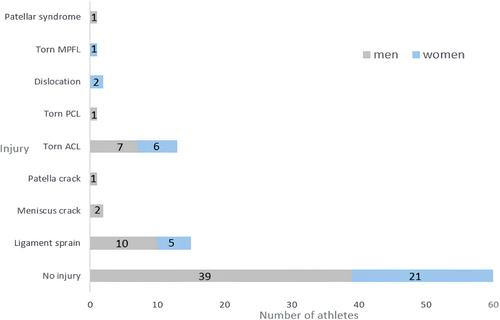Machine learning in knee injury sequelae detection: Unravelling the role of psychological factors and preventing long-term sequelae
Abstract
Purpose
This study evaluated the performance of three machine learning (ML) algorithms—decision tree (DT), multilayer perceptron (MLP) and extreme gradient boosting (XGB)—in identifying regular athletes who suffered a knee injury several months to years prior. In addition, the contribution of psychological variables in addition to biomechanical ones in the classification performance of the ML algorithms was assessed, to better identify factors to get back to competitive sport with the lowest possible risk of new knee injury.
Methods
A cohort of 96 athletes, 36 with prior knee injuries, practicing an average of 5.7 ± 2.4 h per week, participated in a horizontal force-velocity test on a ballistic ergometer providing data of force, velocity and power from each lower limb. They also completed a psychological questionnaire, which included components from the Knee Injury and Osteoarthritis Outcome Score (KOOS) and the Sport Anxiety Scale (SAS). The three ML algorithms were trained on a thousand different train-test sets. Also, Shapley values were calculated for each input variable of a data set to highlight its contribution to the prediction from an ML model.
Results
Over a thousand cross-validations, higher area under the curve (AUC) values were obtained when accounted for the psychological attributes (p < 0.001). Also, higher AUC values were obtained from MLP compared to XGB or DT (p < 0.001). XGB exhibited higher AUC values than DT (p < 0.001).
Conclusions
Our results suggested that psychological factors play a more important role in recognition than biomechanical factors, with KOOS and SAS scores ranking high in the list of influential factors. Additionally, the computing stability of MLP could be recommended for classification tasks in the context of knee injuries.
Level of Evidence
Level III.


 求助内容:
求助内容: 应助结果提醒方式:
应助结果提醒方式:


